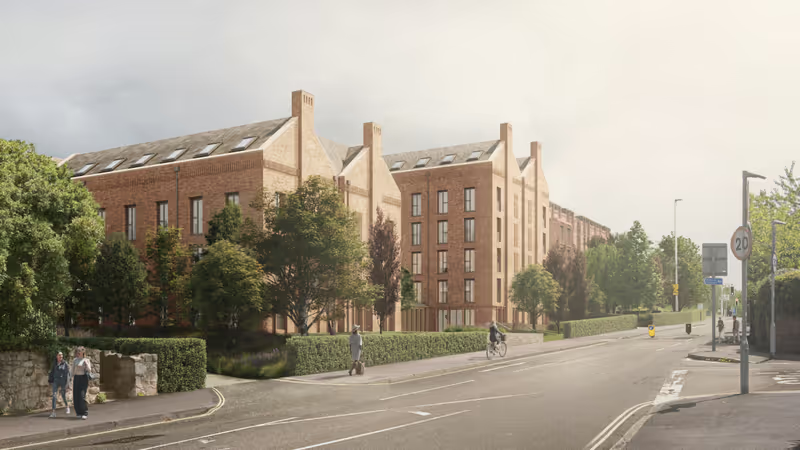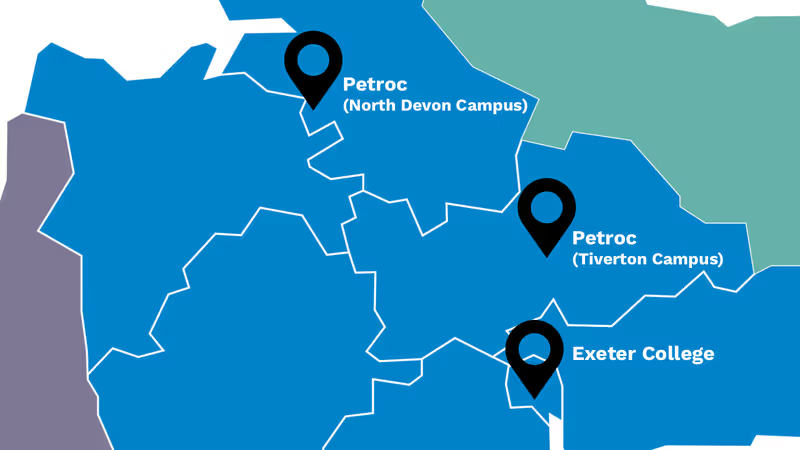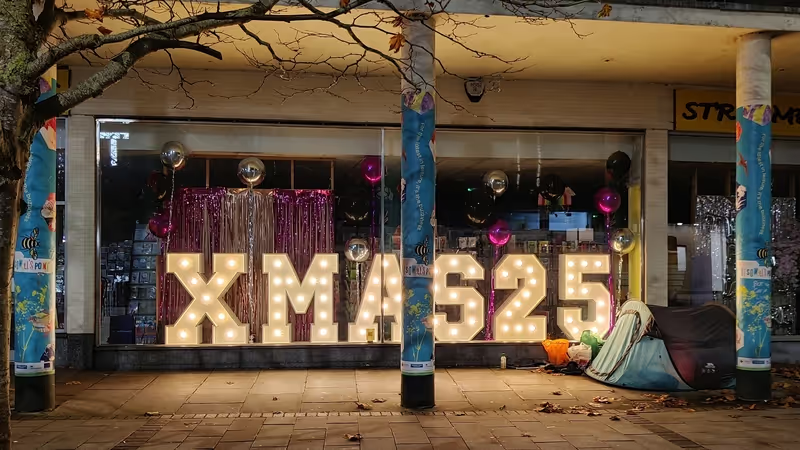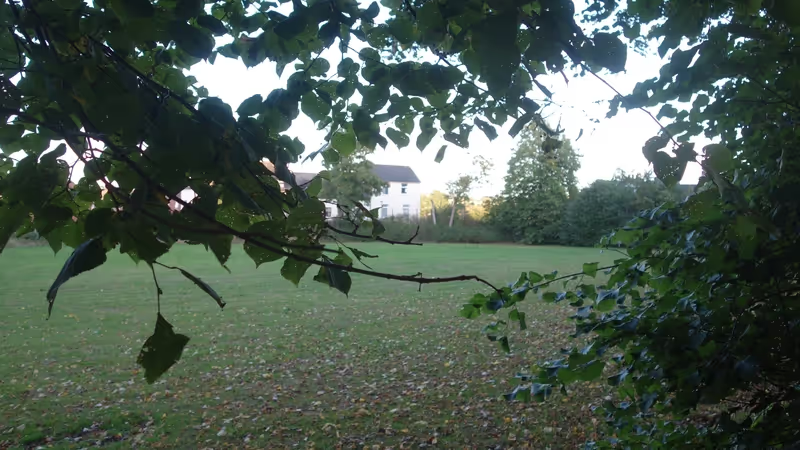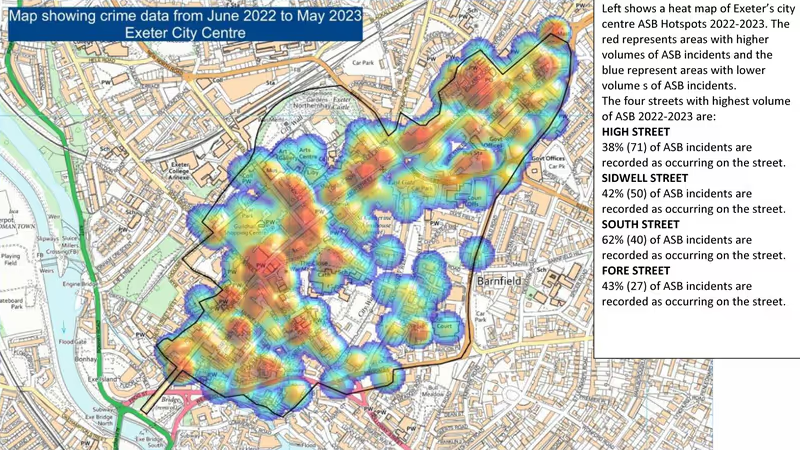According to information obtained from the university under freedom of information legislation there were 39,450 students based at its Exeter campuses during the 2012-22 academic year.
The 38,800 students remaining after distance learners are excluded equated to just under 30% of the city’s 130,800 inhabitants.
The university’s Exeter roll was 11,500 larger than the 27,300 FTE students its website says were based in Exeter during that year.
(FTE student numbers combine full-time and part-time students into a single total used for planning educational provision, although the university does not explain this anywhere on its “facts and figures” page.)
The university also confirmed that there were 33,150 full-time students based at its Exeter campuses in 2021-22 and another 5,300 mainly postgraduate part-time students. The remaining 350 students were registered for single terms or one semester only.
The university did not explain the very large discrepancy between its published FTE figures and those it released under freedom of information legislation, which confirm that nearly 6,000 more full-time students were based on its Exeter campuses than the combined full- and part-time student numbers that its FTE figures purport to represent.
While the university can choose what to publish on its website, its obligations under the Freedom of Information Act 2000 are legally binding. It is a criminal offence to alter or conceal information held by public authorities (including the university) with the intention of preventing disclosure following a request for the information under the Act.
The university also provides its published FTE numbers to the city council to inform its planning policies related to student accommodation in the city despite these numbers being of little use for this purpose. Total student numbers are instead needed, but the university does not provide these.
To estimate the extent to which Exeter’s residential housing stock is occupied by students the council instead relies on student council tax exemption records as part of a matrix of faulty premises, inaccurate information and miscalculated projections on which it has based its student accommodation policies for the past fifteen years.
However the Office for National Statistics (ONS) concluded last year that council tax records cannot be relied on for this purpose after it found that only 12% of students live in addresses solely occupied by students and around 30% live in addresses that appear to be made up of students and non-students.
It also found that only half of all student addresses have any indication on council tax that students live there.
The council says it recorded 2,551 student council tax exemptions in the city’s residential housing stock in September this year (although it told the government the number of such exemptions was higher) and so concluded that 2,551 residential dwellings were occupied by students.
The ONS research suggests that at least twice as many residential dwellings are being used this way (more than the 4,800 council homes in the city).
The council’s student accommodation policies rely on the construction of Purpose Built Student Accommodation (PBSA) to mitigate the impact of university expansion on the city’s housing stock, with the aim that 75% of additional (not all) Exeter university students are housed this way.
No evidence was provided as a basis for this policy when it was introduced fifteen years ago, none was provided when it was reformulated for the 2012 Exeter Core Strategy, currently the city’s principal planning policy document, and none has been provided since.
The core strategy is based on a projection that there would be a little over 16,000 full-time students living away from home in Exeter by 2025-26. The 2010 Streatham campus masterplan is based on there being just 15,800 FTE students on the campus by the same year.
Well over twice that many were based there by this time last year. The new Exeter Local Plan is about to scrap the student accommodation policies contained in the core strategy but its draft version, which is currently out for consultation, has nothing to say about these issues instead.
Nearly 5,000 new PBSA bedspaces have been built in Exeter in the past four years. The university and private sector together provided just under 11,500 at the beginning of 2021-22.
Had all 5,300 of Exeter’s part-time university students been living at home these PBSA blocks would still only have accommodated 35% of the full-time students the university says were based at Exeter campuses that year.
There are now just under 12,500 Exeter PBSA bedspaces after completion of the second phase of the university’s East Park scheme and private developments at Mary Arches Street, Walnut Gardens and The Depot on Cheeke Street.
Were the university’s 2022-23 cohort the same size as the previous year, the extra thousand rooms would still mean only 38% of its full-time Exeter students would live in PBSA during term-time.
Both these calculations also assume that all the PBSA is full.
Consultants commissioned by the council to review Exeter’s PBSA supply this time last year found that just 70% of the 5,100 rooms then available in private PBSA were occupied (the university provided another 6,400) in line with the previous two years.
 Exeter HMO map. Source: University of Exeter.
Exeter HMO map. Source: University of Exeter.
With fewer than 10,000 Exeter PBSA bedspaces occupied during the 2021-22 academic year, the university’s remaining 28,900 Exeter-based students would all have been living in residential housing stock in one form or another.
According to Professor Darren Smith of Loughborough University, who has twice been commissioned by the council to produce reports on the impact of increasing student numbers in Exeter, an average of 3.5 students share a typical student House in Multiple Occupation (HMO).
This would mean Exeter students were living in nearly 8,250 HMOs that year which could otherwise have been used for residential housing by local people. That’s nearly three quarters of the city’s stock of around 11,000 private rented properties.
However, combining unrepresentative council tax exemption figures, private PBSA uptake estimates and HMO occupancy rate averages are unlikely to produce an accurate account of the university’s impact on the city’s residential housing stock.
Not sufficiently accurate, at any rate, to provide a basis on which to introduce the effective student accommodation policies the city needs.
Which is why we also asked the university, under freedom of information legislation, to provide the true (not FTE) numbers of part-time and full-time undergraduate and postgraduate Exeter campus-based students housed both in university- and privately-provided PBSA during the 2021-22 academic year.
Then we would actually know how many of its Exeter-based students were living in private residential housing stock.
 Exeter PBSA map. Source: University of Exeter.
Exeter PBSA map. Source: University of Exeter.
The university’s response was to claim it does not know and cannot find out because it “does not hold structured or consistent data to answer the question without manual process to review all student records”.
It nevertheless also said: “Records are kept as standard address: house number, street name, postcode”.
It said this information could not be used to identify which of its students lived in either its own or privately-provided PBSA despite it also knowing the location and ownership of all 66 such blocks in the city, details which it publishes on its website.
When we pointed out that its standardised student address format would enable it to make simple database queries to match the postcodes of each PBSA address against the postcodes of each student address record, yielding the information we had requested, it claimed that it was not obliged to provide the information as it would have to perform this cross-referencing by hand.
When we asked for a formal review of its handling of our information request, as per the rights conferred by the Freedom of Information Act, it initially resisted, repeating its previous claim about manual processing.
Then, when we pointed out that its response did not address any of the issues we raised regarding its failure to comply with the provisions of the Act, and asked it to confirm that it had provided its full and final response before we complained to the Information Commissioner, it suddenly changed its tune and said it would perform a proper review.
Such reviews should normally be completed within twenty working days. After 22 working days we followed up and were told that a review was underway and would be completed in no more than 40 working days, the maximum allowed by law.
43 working days have now passed since we asked for a review (62 since we submitted the initial request) and we still haven’t received a response from the university.
The university claims that it is unable to supply the requested information because it does not hold student address data in a form that would enable it to do so.
Its responses to our information request and university regulations and policies which relate to the electronic online Student Record System that it uses to manage address information for all its Exeter students both say otherwise.
Its data protection notice says that it holds and processes permanent and term time addresses of all its students and its general regulations for students say all Exeter-based students are required to maintain up to date home and term-time address records via its electronic online Student Record System as a condition of enrolment, a requirement repeated on its academic study administration portal.
It even provides a student records data request service that enables staff to access these records.
The university says its “dynamic and innovative research culture will foster new discoveries, inspire creativity and bring people together to solve the challenges of today and tomorrow”. It appears a caveat is required when it comes to its impact on Exeter’s residential housing stock.


